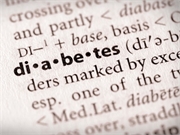- Navigating Your Midlife Crisis: Embracing New Possibilities
- City Raccoons Showing Signs of Domestication
- Mapping the Exposome: Science Broadens Focus to Environmental Disease Triggers
- One Week Less on Social Media Linked to Better Mental Health
- Your Brain Changes in Stages as You Age, Study Finds
- Some Suicide Victims Show No Typical Warning Signs, Study Finds
- ByHeart Formula Faces Lawsuits After Babies Sickened With Botulism
- Switch to Vegan Diet Could Cut Your Greenhouse Gas Emissions in Half
- Regular Bedtime Does Wonders for Blood Pressure
- Dining Alone Could Mean Worse Nutrition for Seniors
White House Announces Plan for Medicare Recipients to Get Insulin at $35 Per Month

Beginning next year, people on some Medicare Part D or Medicare Advantage Plans who need insulin will be able to access the lifesaving medication for just $35 a month, according to a new plan announced by the White House.
In some cases, the cost may be even lower, President Donald Trump said at a Rose Garden news conference on Tuesday.
“I’m proud to announce that we have reached an agreement to dramatically slash the out-of-pocket costs of insulin, [which is] so necessary for hundreds of thousands of seniors enrolled in Medicare,” Trump said.
He added that, “participating plans will cap costs at just $35 a month per type of insulin and some plans may offer it free.”
Tracey Brown, CEO of the American Diabetes Association (ADA), said, “Today’s announcement is a positive step forward for people living with diabetes. One in four people with diabetes are 65 or older, and many are on fixed incomes. The Part D Senior Savings Model will give broad access to insulin at a continuous and consistent $35 flat fee [for seniors on participating plans].”
There are 7 million Americans who need insulin to survive, Brown said. But an ADA study found that insulin is increasingly unaffordable, with the average U.S. price nearly tripling between 2002 and 2013.
As many as 1 in 4 people with diabetes have reported needing to ration their insulin due to cost concerns, Brown noted. And if people don’t take the insulin they need, it can lead to diabetes complications such as kidney problems, vision problems, heart disease and even death.
More than 1,750 Medicare Part D prescription drug plans and Medicare Advantage Plans have applied to the Centers for Medicare and Medicaid Services (CMS) to offer lower insulin costs through the Part D Senior Savings Model for 2021, the agency noted. CMS estimates that 3.3 million people on Medicare use insulin.
This plan is a voluntary agreement between the Trump administration, the pharmaceutical industry and insurers. The plan covers all types of insulin. CMS said that there would be a “minimal [insurance] premium increase” for plans that offer the insulin cost cap.
“CMS is enabling and encouraging Part D plans to offer fixed, predictable co-pays,” according to a CMS news release.
CMS estimates that Medicare participants who use insulin and join a plan participating in the model could save as much as 66% over a year — average out-of-pocket savings of $446.
Not all Medicare plans will offer the cheaper insulin costs, however. Open enrollment for next year’s Medicare plans begins Oct. 15, 2020 and ends Dec. 7, 2020. If you’re one of the millions on Medicare using insulin, check to see if the plan you are choosing is one that participates in the Part D Senior Savings Model.
In his Rose Garden remarks, Trump suggested that the high cost of insulin was due to the Affordable Care Act. However, the government’s inability to negotiate drug prices for Medicare beneficiaries actually dates back to the Medicare Modernization Act of 2003, the law that introduced Medicare Part D. That law was enacted under President George W. Bush.
The new price caps are not a U.S. first: A number of private insurers, pharmaceutical companies and nine states have already introduced various policies or legislation to limit the cost of insulin. States with laws that already cap insulin costs to between $25 and $100 a month include Colorado, Illinois, New Mexico, Maine, West Virginia, Utah, Washington, Virginia, New York, according to the ADA.
Holly Campbell, a spokesperson for PhRMA, a pharmaceutical trade industry association, noted that some companies are also already offering discounts and rebates on insulin.
She added that PhRMA is “pleased to see the Administration is focused on lowering out-of-pocket costs at the pharmacy counter for seniors with diabetes. The model has the potential to meaningfully improve affordability and predictability for patients who rely on insulin, but it must be a shared responsibility between health plans and biopharmaceutical companies.”
Insulin isn’t the only diabetes medication with a steep price tag. Newer medications for type 2 diabetes, such as GLP-1 agonists (Trulicity, Ozempic) and SGLT-2 inhibitors (Jardiance, Farxiga), may also be priced out of reach for those on certain insurance plans. CMS administrator Seema Verma said the current savings plan model is for insulin only. But, she added that the administration would be monitoring the plan and if successful, it might be used for other medications too.
More information
Learn more about insulin affordability from the American Diabetes Association.
Source: HealthDay
Copyright © 2025 HealthDay. All rights reserved.










